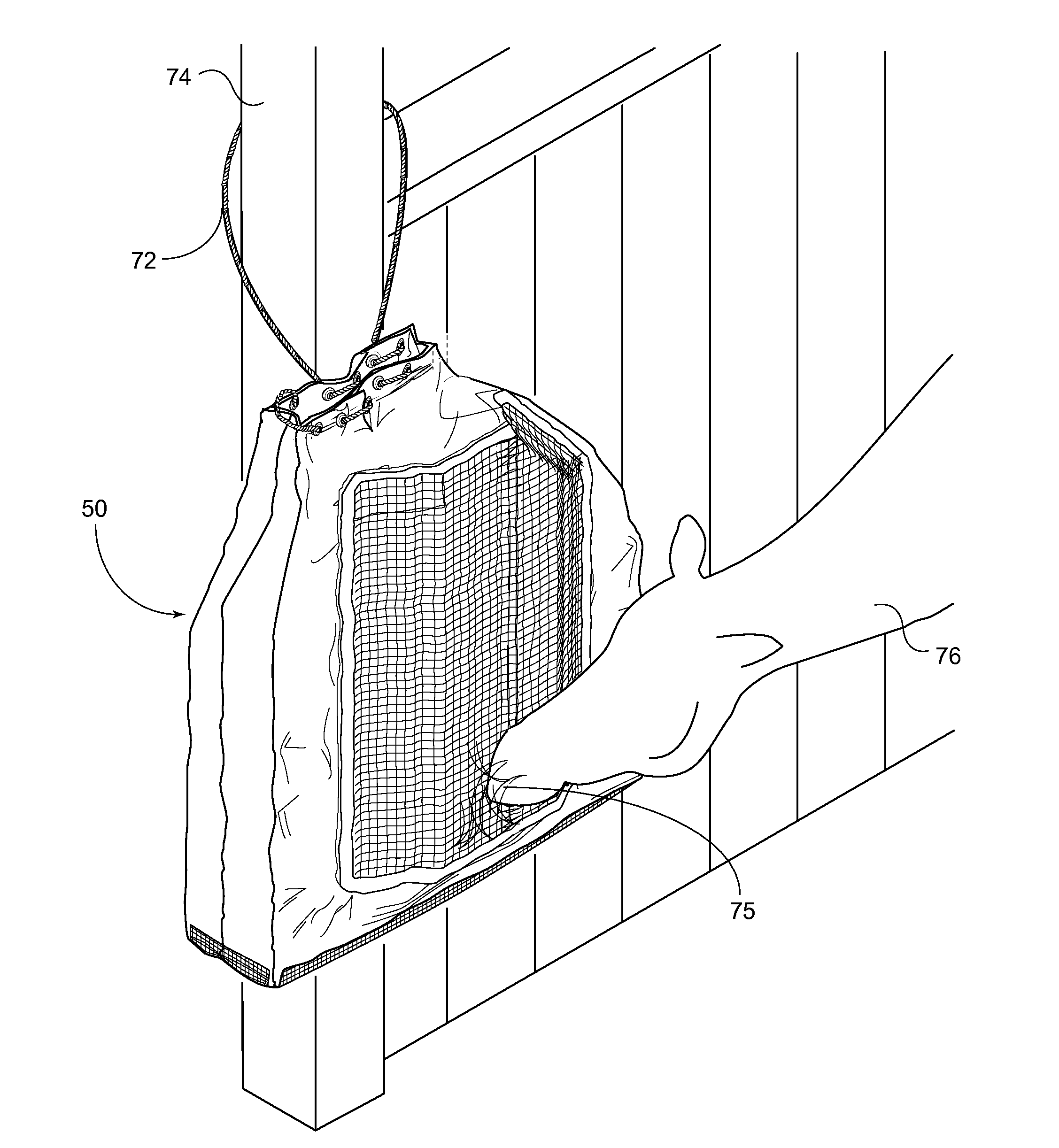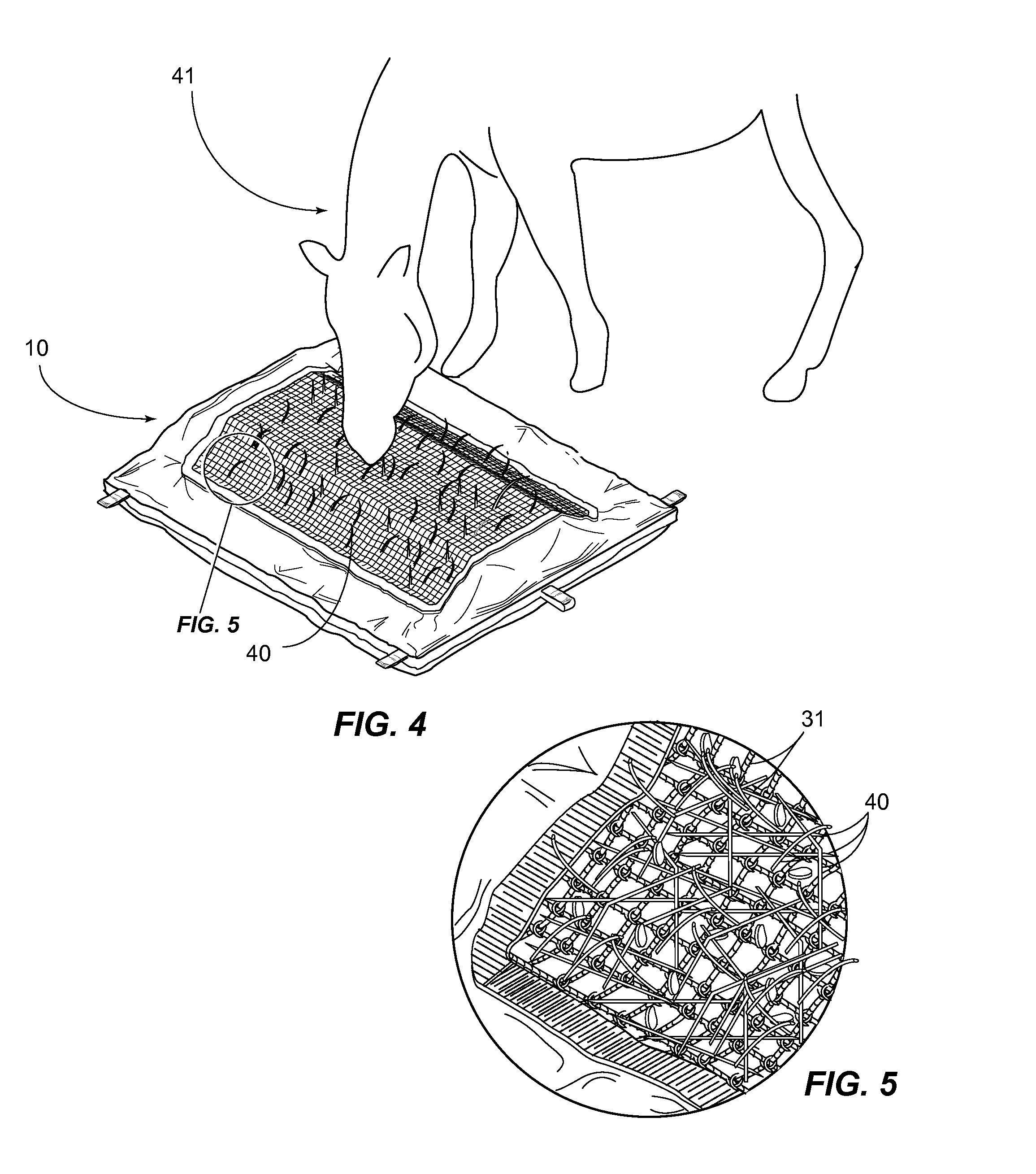Horse Feeder
a feeder and horse technology, applied in the field of feeders, can solve the problems of affecting the health of the animal, affecting the health of the horse, and animal eating too fast, so as to promote the eating habit and improve the health of the animal
- Summary
- Abstract
- Description
- Claims
- Application Information
AI Technical Summary
Benefits of technology
Problems solved by technology
Method used
Image
Examples
Embodiment Construction
[0045]As used herein, the following terms shall have the following meaning:
[0046]“mesh” is herein defined as an openwork structure having open spaces in a network and cords, threads, or wires surrounding these spaces.
[0047]“cord” is herein defined as rope, string, wire, cord and the like including bungee cord and elastic cable or cord.
[0048]“grommets” are herein defined as perforations reinforced with grommets.
[0049]In certain embodiments of animal feeders the present invention the feeder is a flexible receptacle having a top wall, a bottom wall, and a feed entry opening wherein at least a portion of the top wall comprises a flexible feeding mesh with feeding mesh openings of a size chosen to permit only limited amounts of animal feed disposed within the receptacle to be accessed through the open mesh by a feeding animal, such that the feeding animal consumes the contents of the receptacle over a period of time dependant upon the size of the feeding mesh openings chosen. Such a feed...
PUM
 Login to View More
Login to View More Abstract
Description
Claims
Application Information
 Login to View More
Login to View More - R&D
- Intellectual Property
- Life Sciences
- Materials
- Tech Scout
- Unparalleled Data Quality
- Higher Quality Content
- 60% Fewer Hallucinations
Browse by: Latest US Patents, China's latest patents, Technical Efficacy Thesaurus, Application Domain, Technology Topic, Popular Technical Reports.
© 2025 PatSnap. All rights reserved.Legal|Privacy policy|Modern Slavery Act Transparency Statement|Sitemap|About US| Contact US: help@patsnap.com



